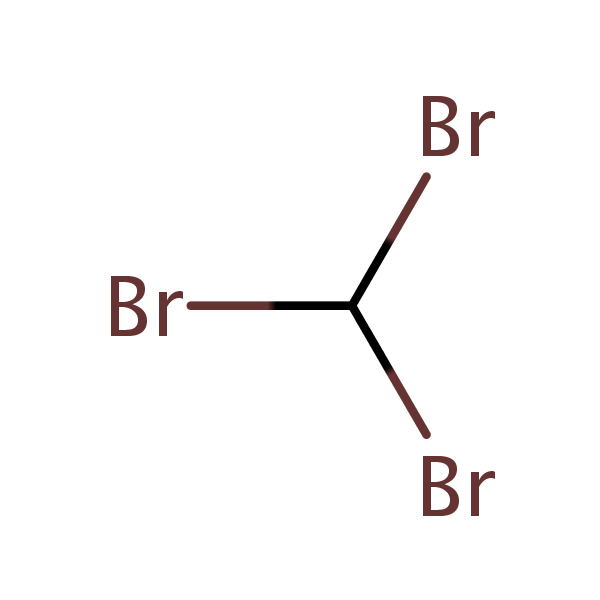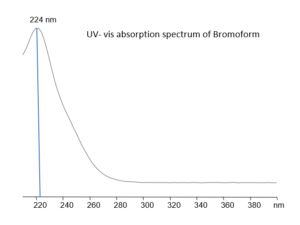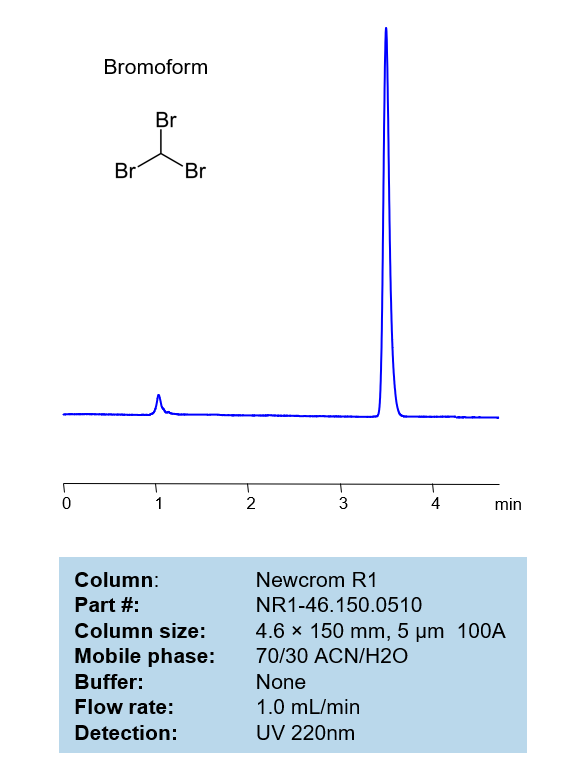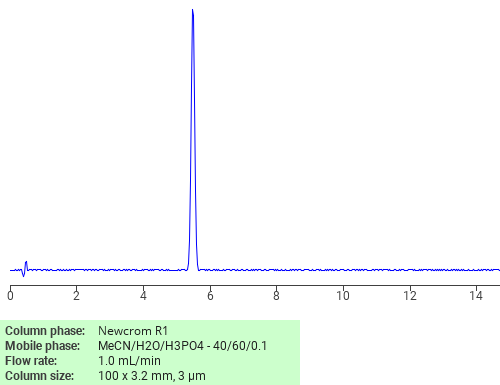| CAS Number | 75-25-2 |
|---|---|
| Molecular Formula | CHBr3 |
| Molecular Weight | 252.732 |
| InChI Key | DIKBFYAXUHHXCS-UHFFFAOYSA-N |
| LogP | 2.40 |
| Synonyms |
|
Applications:
HPLC Method for Analysis of Bromoform on Newcrom R1 Column
May 30, 2023
HPLC Method for Analysis of Bromoform on Newcrom R1 by SIELC Technologies
Separation type: Liquid Chromatography Mixed-mode
Bromoform is a heavy, volatile, colorless to yellow liquid, with a high refractive index, very high density, and sweet odor is similar to that of chloroform. It has the chemical formula CHBr3.
Bromoform is produced naturally in small quantities by algae and seaweed in the ocean, and it can also be synthesized by the haloform reaction of acetone (or ethanol) with sodium hypobromite, generated in situ by the reaction of sodium hydroxide with bromine.
In terms of uses, it was once used as a solvent, sedative and flame retardant, but now it is mainly used as a laboratory reagent.
One important thing to note is that bromoform is considered hazardous. It’s suspected of causing cancer, may cause damage to organs through prolonged or repeated exposure, and is harmful to aquatic life with long lasting effects.
Bromoform can be retained and analyzed on a reverse-phase Newcrom R1, 4.6 x 150 mm, 5 µm, 100 A, dual ended column with a mobile phase consisting of water and Acetonitrile (MeCN). This analytical method can detect compounds with high resolution and peak symmetry using UV detection at 220 nm.
High Performance Liquid Chromatography (HPLC) Method for Analysis of Bromoform
Condition
| Column | Newcrom R1, 4.6 x 150 mm, 5 µm, 100 A, dual ended |
| Mobile Phase | MeCN/H2O -70/30% |
| Buffer | None |
| Flow Rate | 1.0 ml/min |
| Detection | UV 220 nm |
| Peak Retention Time | 3.52 min |
| Sample concentration | 0.57 mg/ml |
| Injection volume | 3 µl |
| Sample diluent | MeCN/H2O -70/30% |
| LOD* | 0.01 ppm |
Description
| Class of Compounds | Haloforms |
| Analyzing Compounds | Bromoform |
Application Column
Newcrom R1
Column Diameter: 4.6 mm
Column Length: 150 mm
Particle Size: 5 µm
Pore Size: 100 A
Column options: dual ended

Separation of Bromoform on Newcrom R1 HPLC column
February 16, 2018
Bromoform can be analyzed by this reverse phase (RP) HPLC method with simple conditions. The mobile phase contains an acetonitrile (MeCN), water, and phosphoric acid. For Mass-Spec (MS) compatible applications the phosphoric acid needs to be replaced with formic acid. Smaller 3 µm particles columns available for fast UPLC applications. This liquid chromatography method is scalable and can be used for isolation impurities in preparative separation. It also suitable for pharmacokinetics.
Application Column
Newcrom R1
The Newcrom columns are a family of reverse-phase-based columns. Newcrom A, AH, B, and BH are all mixed-mode columns with either positive or negative ion-pairing groups attached to either short (25 Å) or long (100 Å) ligand chains. Newcrom R1 is a special reverse-phase column with low silanol activity.
Select options




